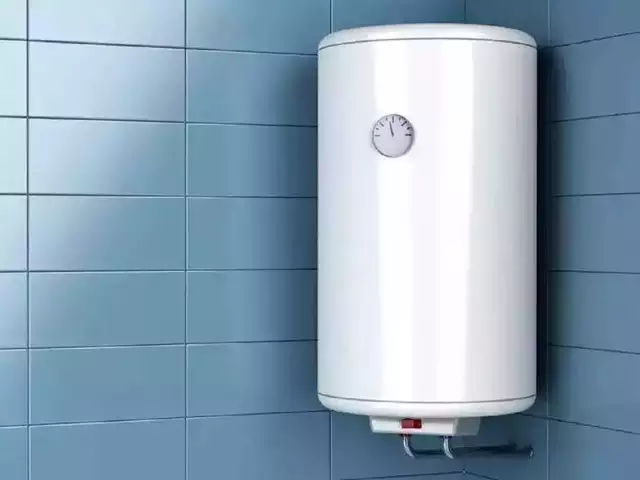Imagine starting your day with a hot shower only to find a puddle forming beneath your water heater. A leaking water heater, especially from the top, can be a troubling sight for any homeowner. Not only does it pose a threat to your property, but it also disrupts your daily routine. However, fret not, as in this, we’ll delve into the steps you can take when faced with a leaking water heater, focusing on practical solutions that encompass repair, maintenance, and if necessary, water heater replacement or water heater installation.
A leaking water heater demands immediate attention, and understanding the proper course of action is crucial to mitigate any potential damage and restore the functionality of your water heating system. From troubleshooting the source of the leak to deciding whether repair or replacement is the best option, we’ll cover everything you need to know to address this issue effectively. So, let’s dive in and explore the steps to take when your water heater starts leaking from the top.
Safety First: Turning Off the Power and Water Supply
Safety is paramount when dealing with a leaking water heater, particularly when considering water heater replacement or water heater installation. Before beginning any work, it’s crucial to turn off the power and water supply to ensure a safe environment. For electric water heaters, locate the circuit breaker or fuse box and switch off the corresponding breaker. Gas water heaters require shutting off the gas supply using the valve located nearby. Additionally, turn off the water supply by closing the valve connected to the cold-water inlet pipe. Confirming that power and water are completely shut off minimizes the risk of electric shock, gas leaks, and water damage. Prioritizing safety sets the foundation for effective troubleshooting, repair, or replacement of your water heater, ensuring a smooth and secure process.
Identifying the Source of the Leak
Identifying the source of a leak in your water heater is crucial, especially when considering water heater replacement or water heater installation. Begin by visually inspecting the top of the heater, focusing on components such as inlet and outlet connections, the temperature and pressure relief valve (T&P valve), and the heating element. Look for signs of corrosion, loose fittings, or damaged pipes around these areas. Tighten any loose connections carefully, and if you notice corrosion, it may indicate the need for replacement parts.
Next, check the T&P valve for leaks or signs of damage. Test the valve by lifting its lever briefly to release some water. If water continues to leak after releasing the lever or if the valve appears corroded, it should be replaced promptly.
Potential Causes and Solutions
Several factors could contribute to a water heater leaking from the top, necessitating water heater replacement or water heater installation. Loose fittings, corroded pipes, or damaged seals at the inlet and outlet connections might cause leaks. Tightening connections or replacing seals can resolve this issue. Additionally, a malfunctioning temperature and pressure relief valve (T&P valve) may release excess pressure, leading to leaks. Replacing the T&P valve can rectify this problem. In some cases, a leaking heating element gasket or threads may require replacing the heating element. Identifying and addressing these potential causes promptly can prevent further damage and ensure efficient water heater operation.
Repair or Replacement: Determining the Next Steps
After identifying the source of the leak in your water heater, it’s essential to evaluate whether repair or replacement is the most appropriate course of action, considering water heater replacement or water heater installation. If the leak stems from minor issues such as loose fittings, corroded pipes, or damaged seals, simple repairs may suffice. Tightening connections, replacing seals, or repairing minor leaks in the T&P valve could resolve the problem efficiently.
However, if the leak persists despite attempted repairs or if the water heater is old and showing signs of extensive wear and tear, replacement may be the better option. A leaking water heater, especially from the top, could indicate internal tank corrosion, which often necessitates replacement. Additionally, if the water heater is nearing the end of its lifespan or if repairs are expected to be costly, investing in a new water heater installation could be more cost-effective in the long run, ensuring a reliable hot water supply and minimizing the risk of future leaks. Consulting with a qualified plumber can help you make an informed decision based on the condition of your water heater and your long-term needs.
Preventive Maintenance Tips
To extend the lifespan of your water heater and minimize the need for water heater replacement or water heater installation, regular preventive maintenance is key. Here are some essential tips to keep your water heater in optimal condition:
Regular Inspections: Perform visual inspections of your water heater, checking for signs of leaks, corrosion, or rust. Address issues as quickly as you can to prevent further damage.
Flushing the Tank: Sediment buildup inside the tank can reduce heating efficiency and lead to corrosion. To keep the tank operating at its best and get rid of sediment, flush it periodically.
Testing Pressure Relief Valve: Test the temperature and pressure relief (T&P) valve annually by lifting its lever to ensure proper functioning. Replace the valve if it leaks or fails the test.
Adjusting Temperature: Set the water heater temperature to a safe and energy-efficient level, typically around 120 degrees Fahrenheit, to prevent overheating and reduce energy consumption.
Insulating Pipes: Reduce heat loss and increase energy efficiency by insulating hot water pipes.
Addressing a leaking water heater promptly is crucial to prevent further damage and ensure the safety and comfort of your home. By following the steps outlined in this, including identifying the source of the leak, determining whether repair or replacement is necessary, and implementing preventive maintenance measures, you can maintain a reliable hot water supply while minimizing the need for costly water heater replacement or water heater installation in the future.


No comments yet